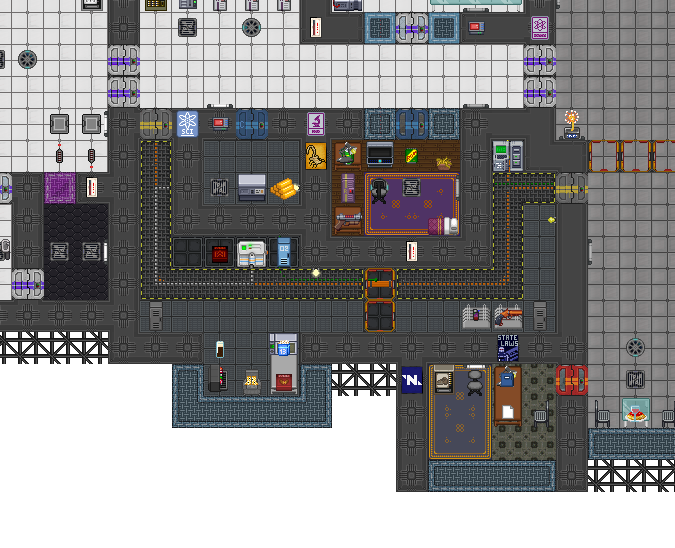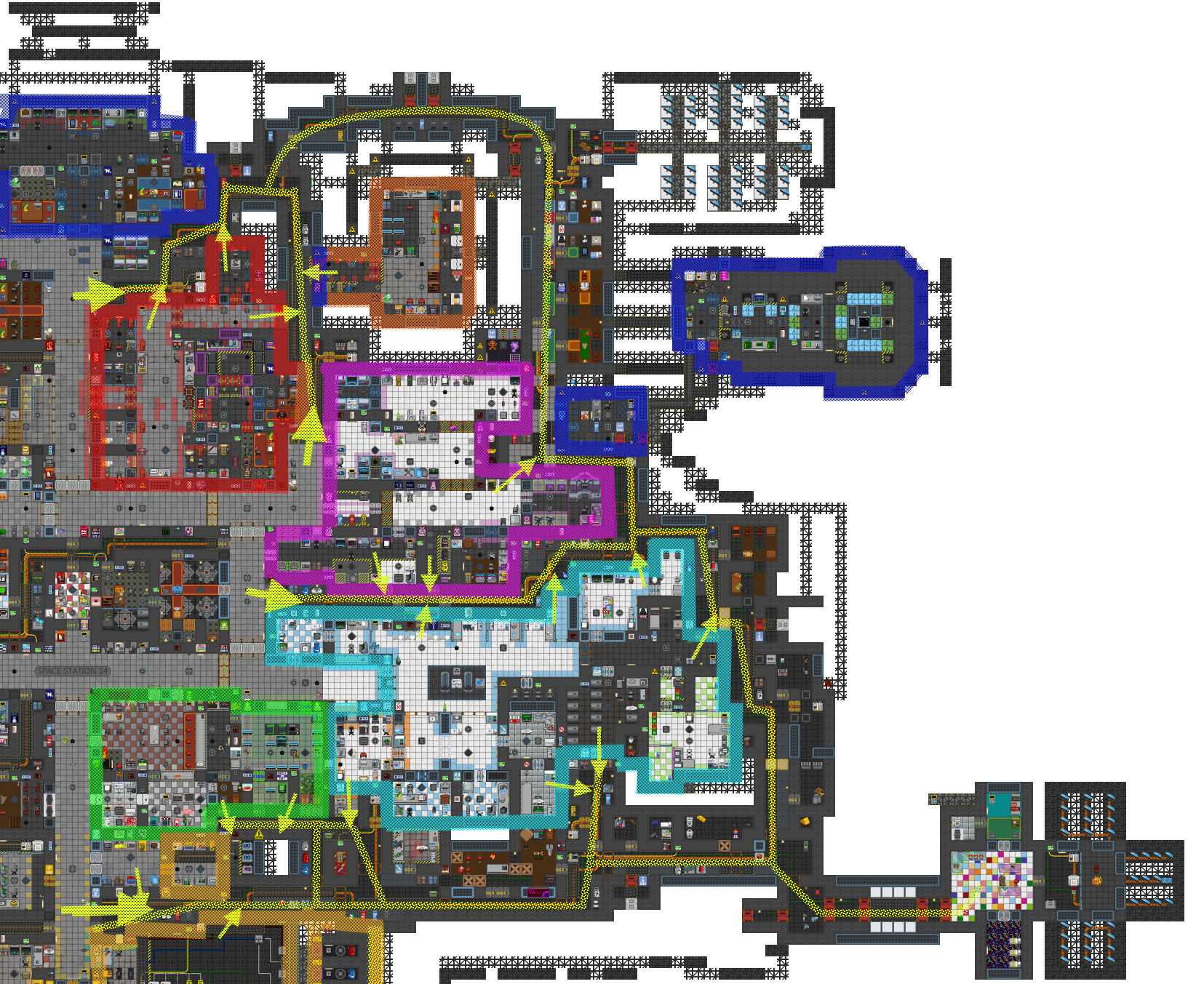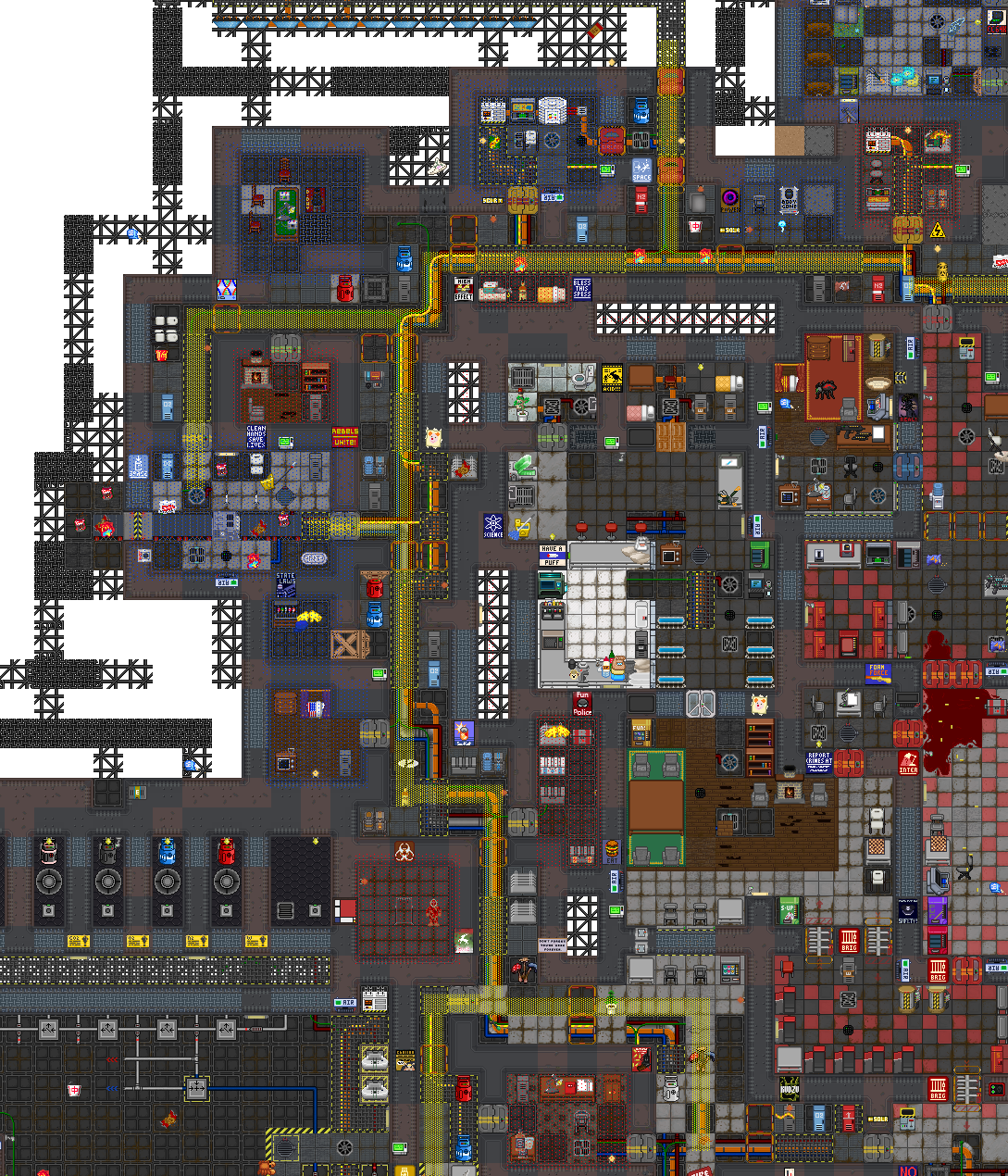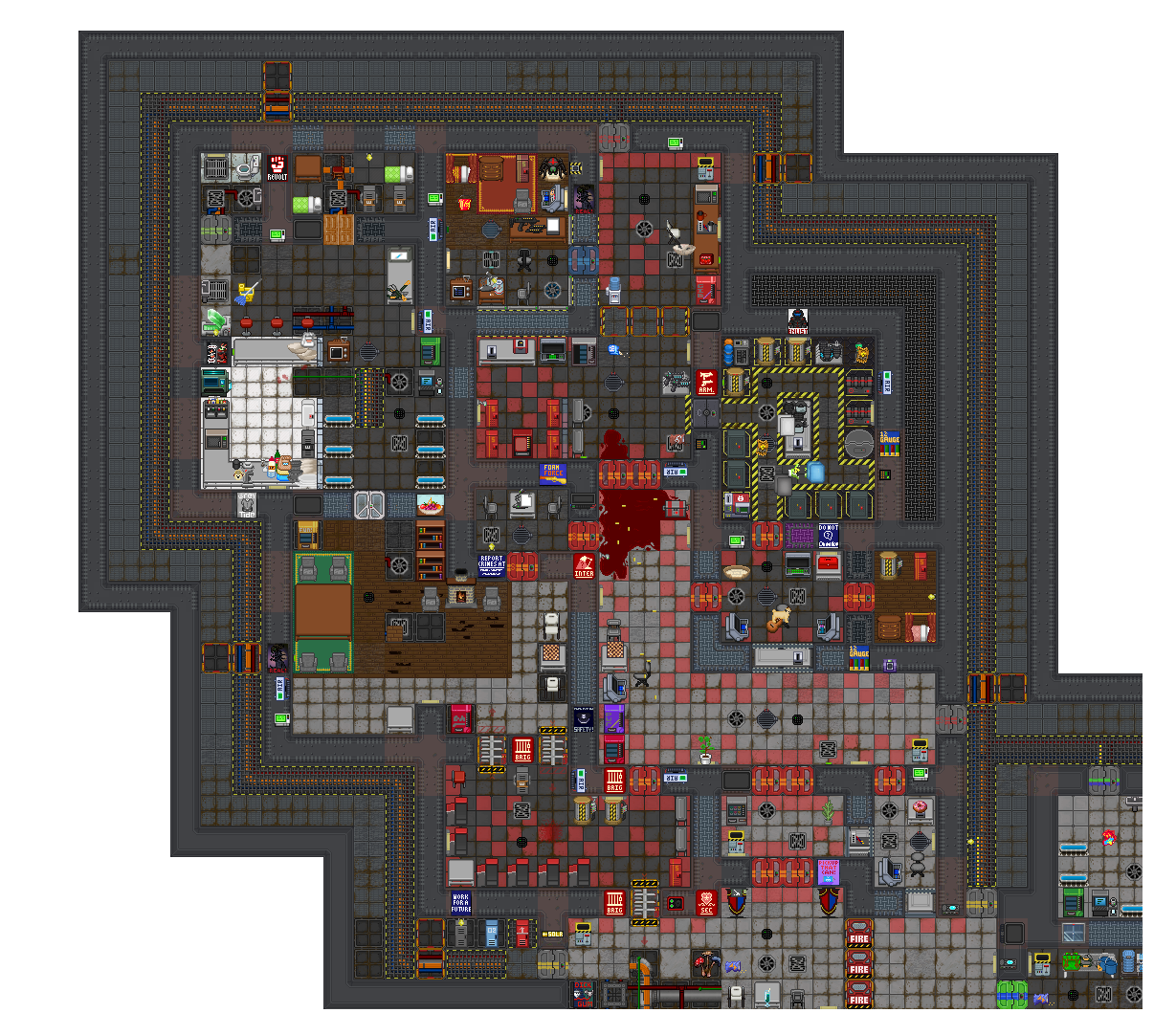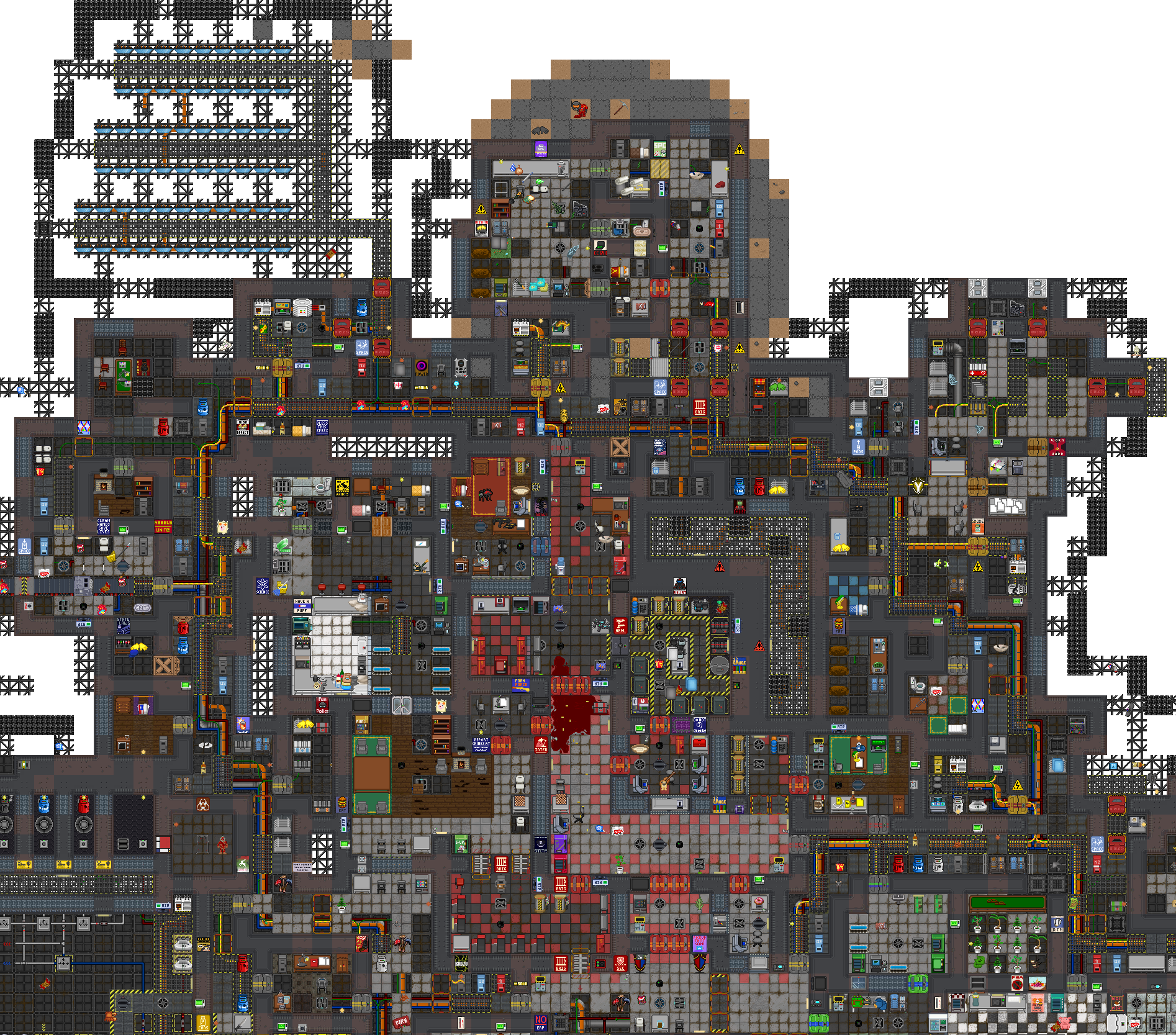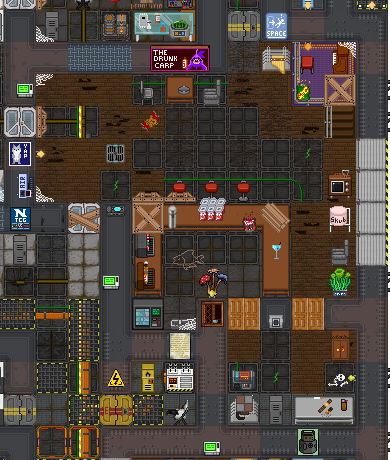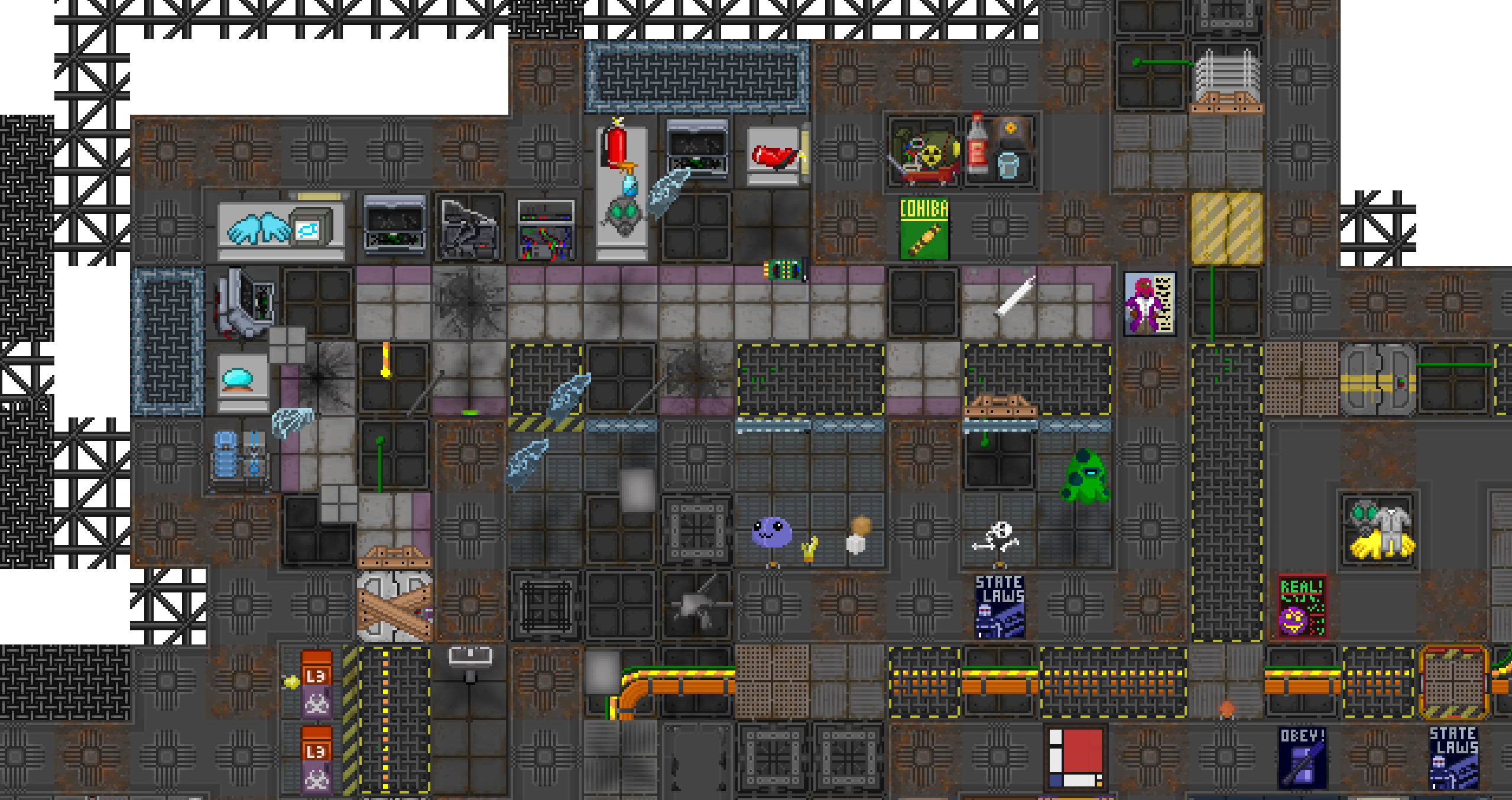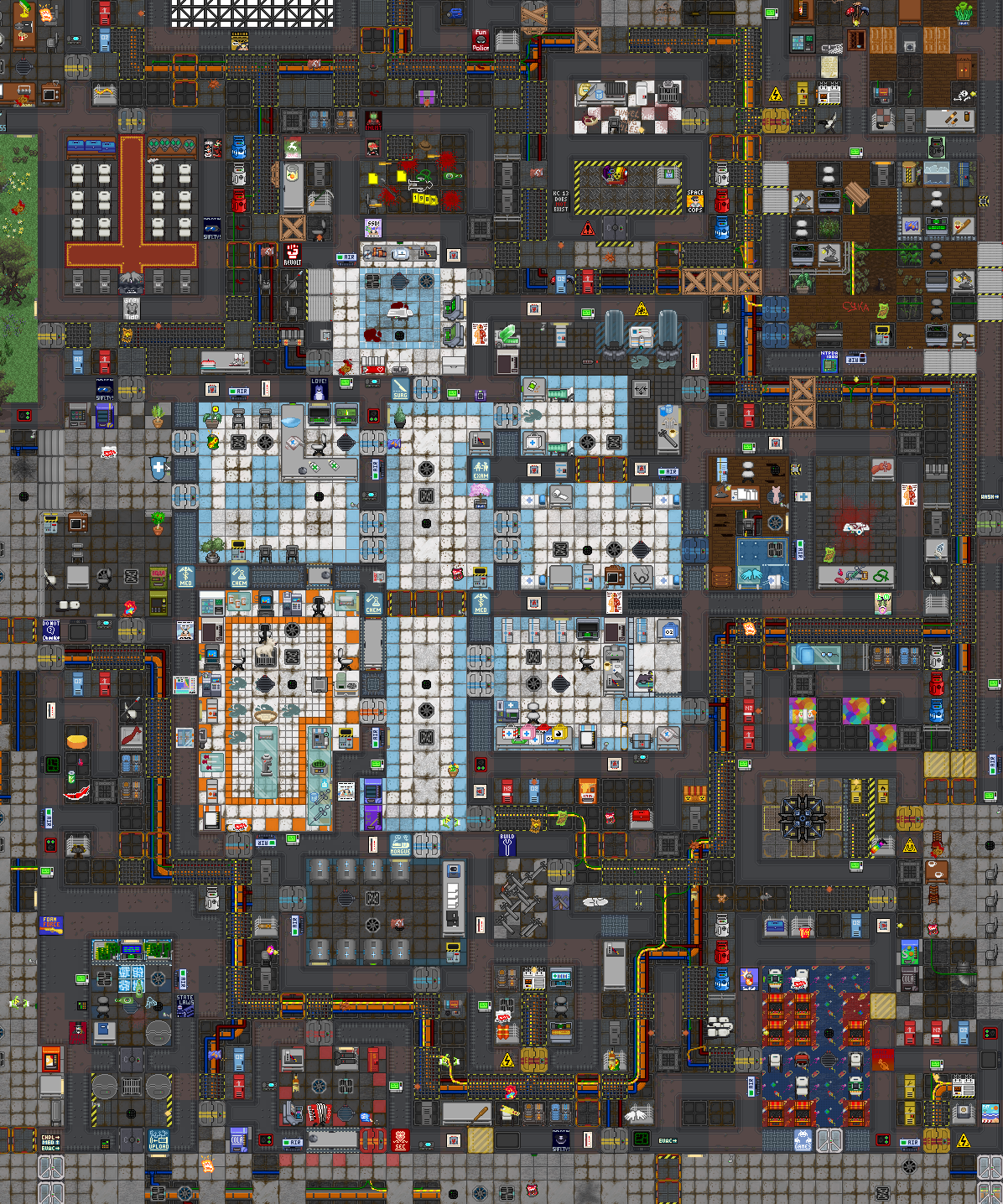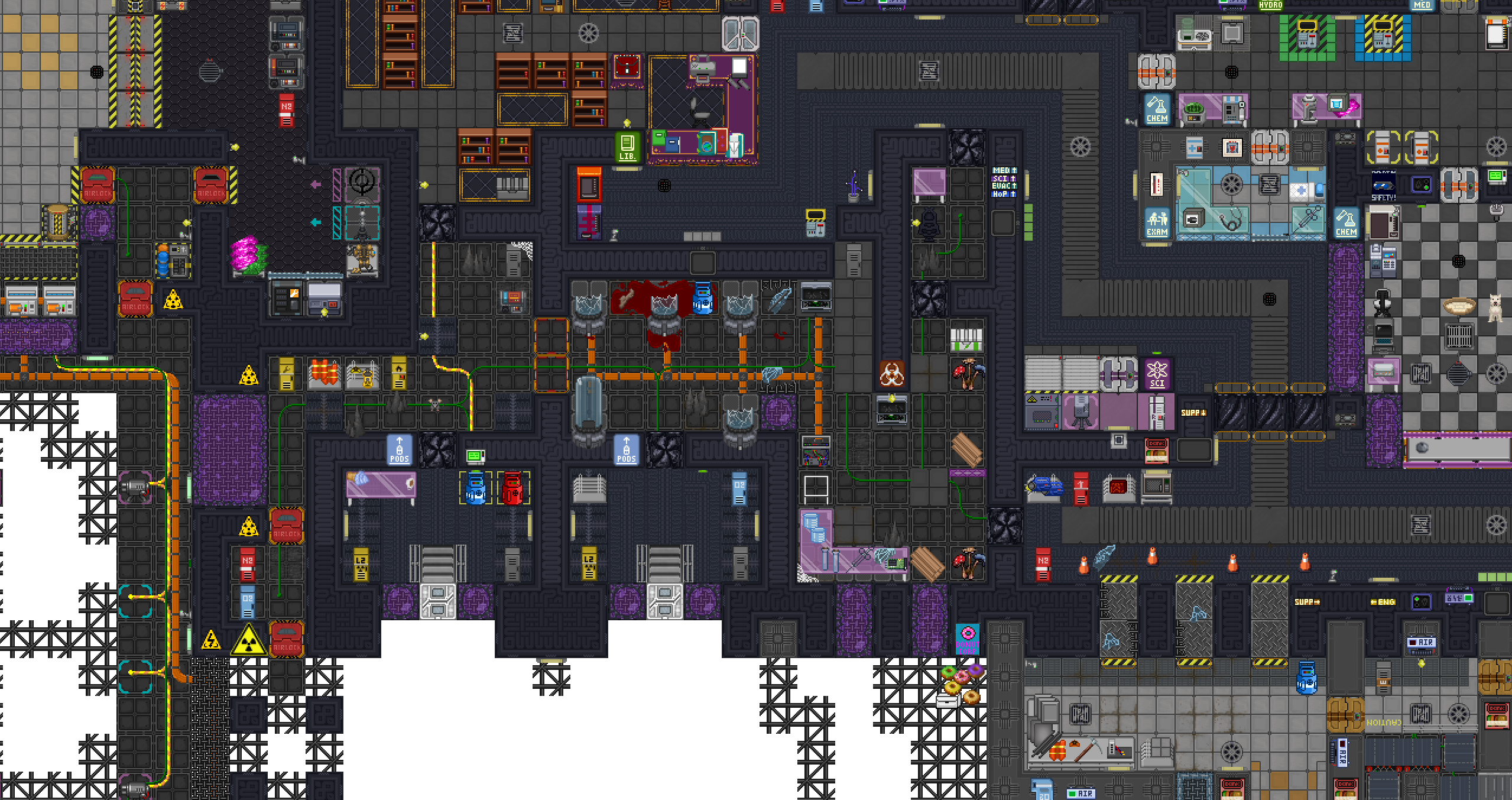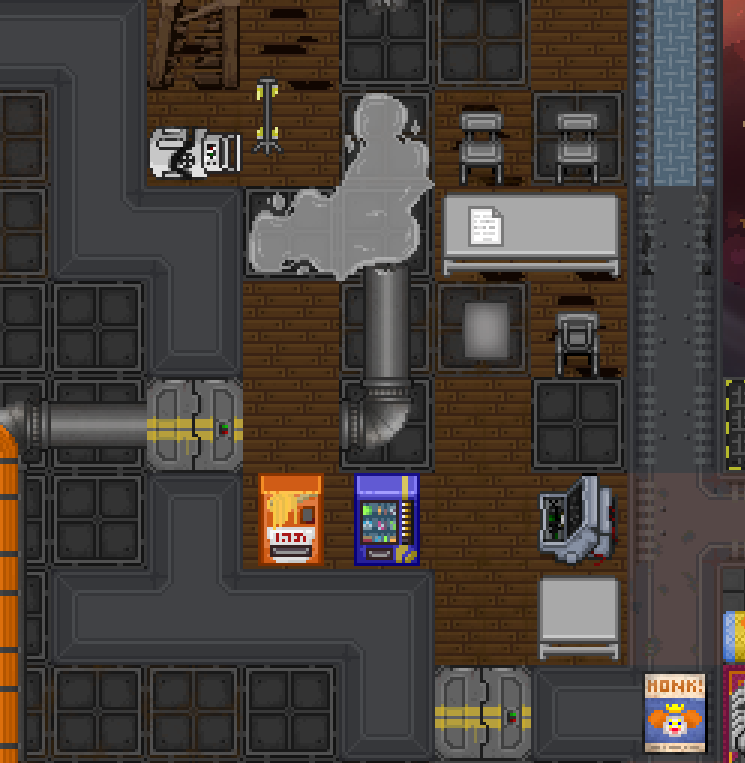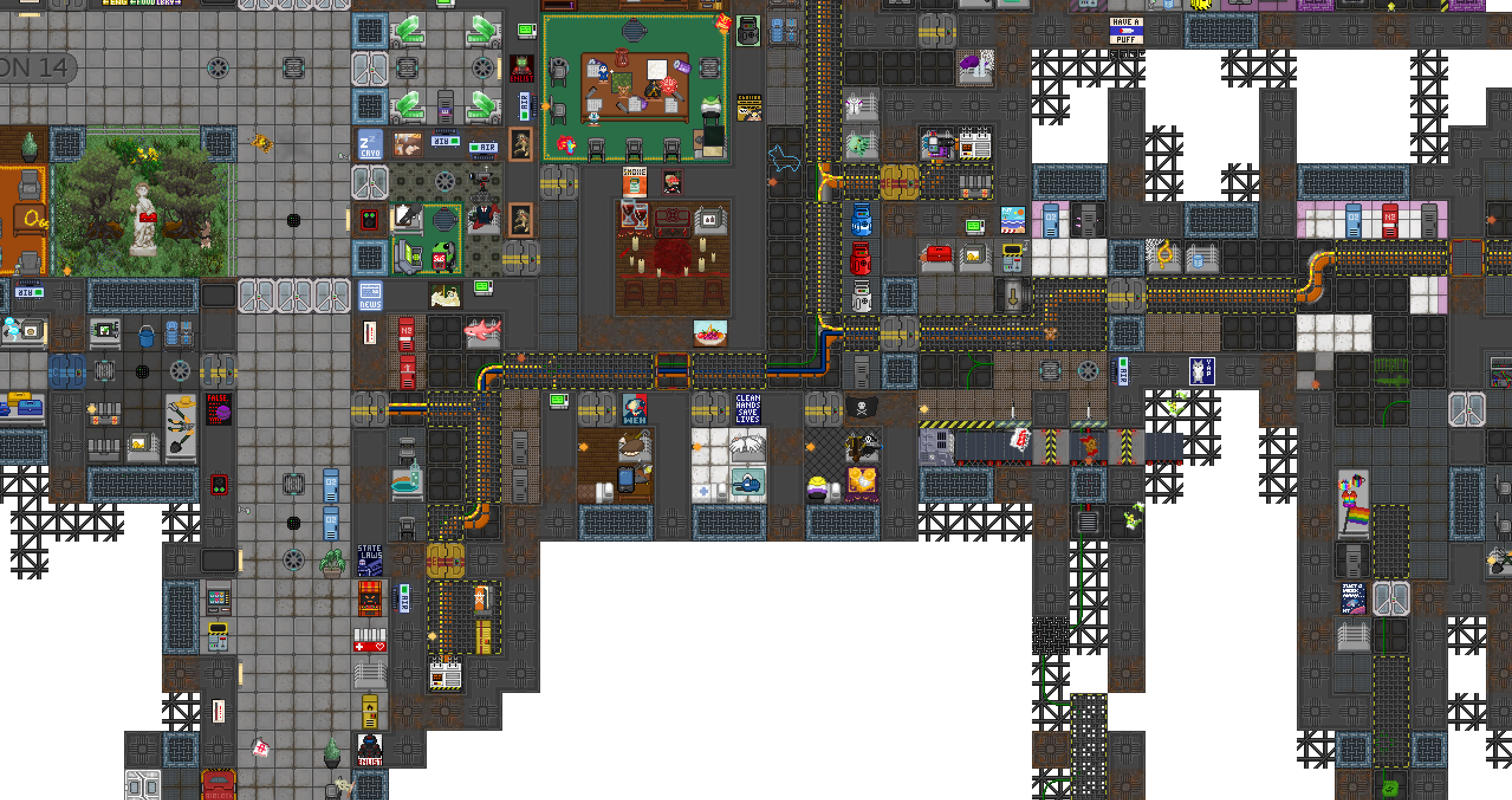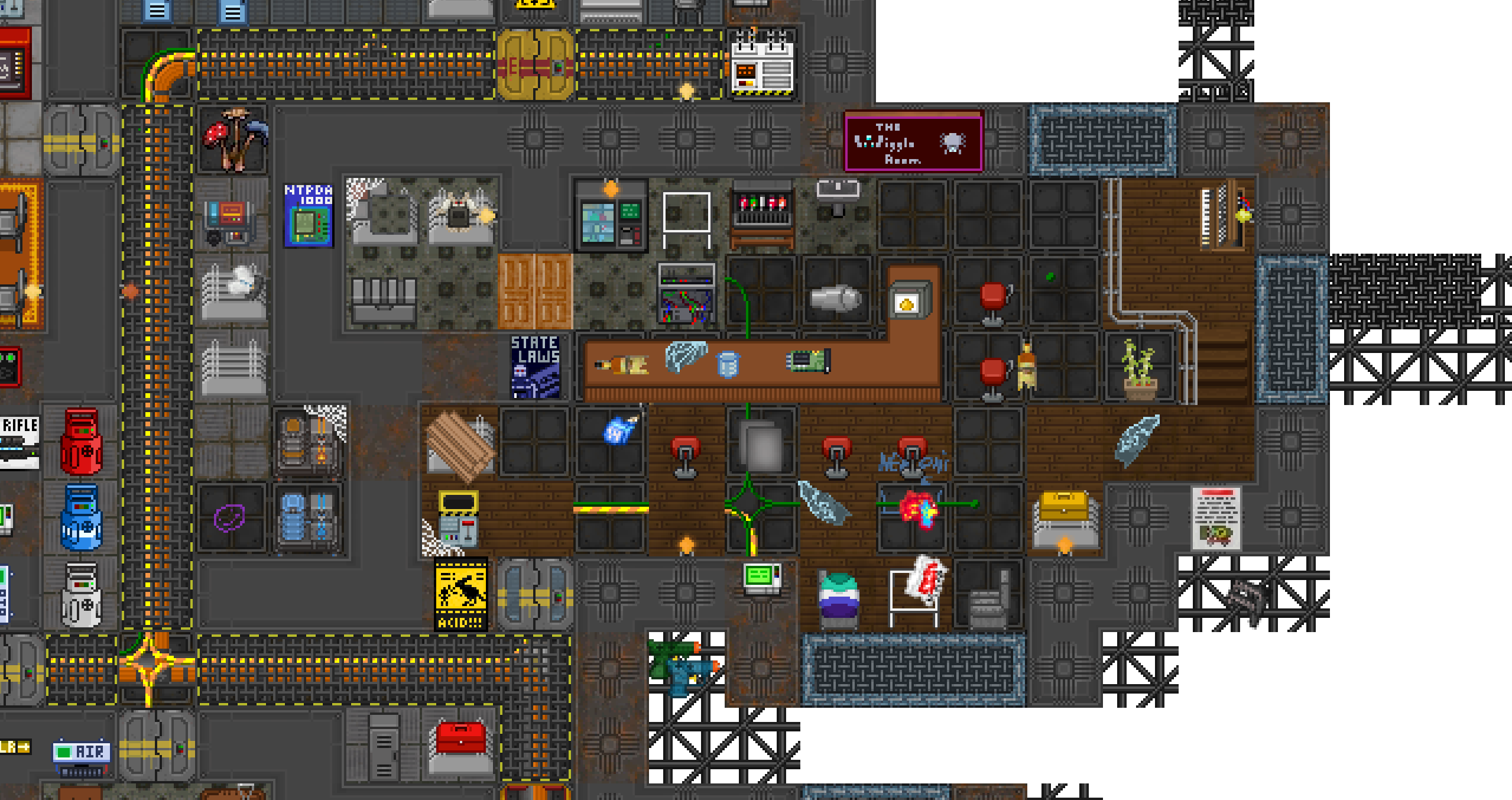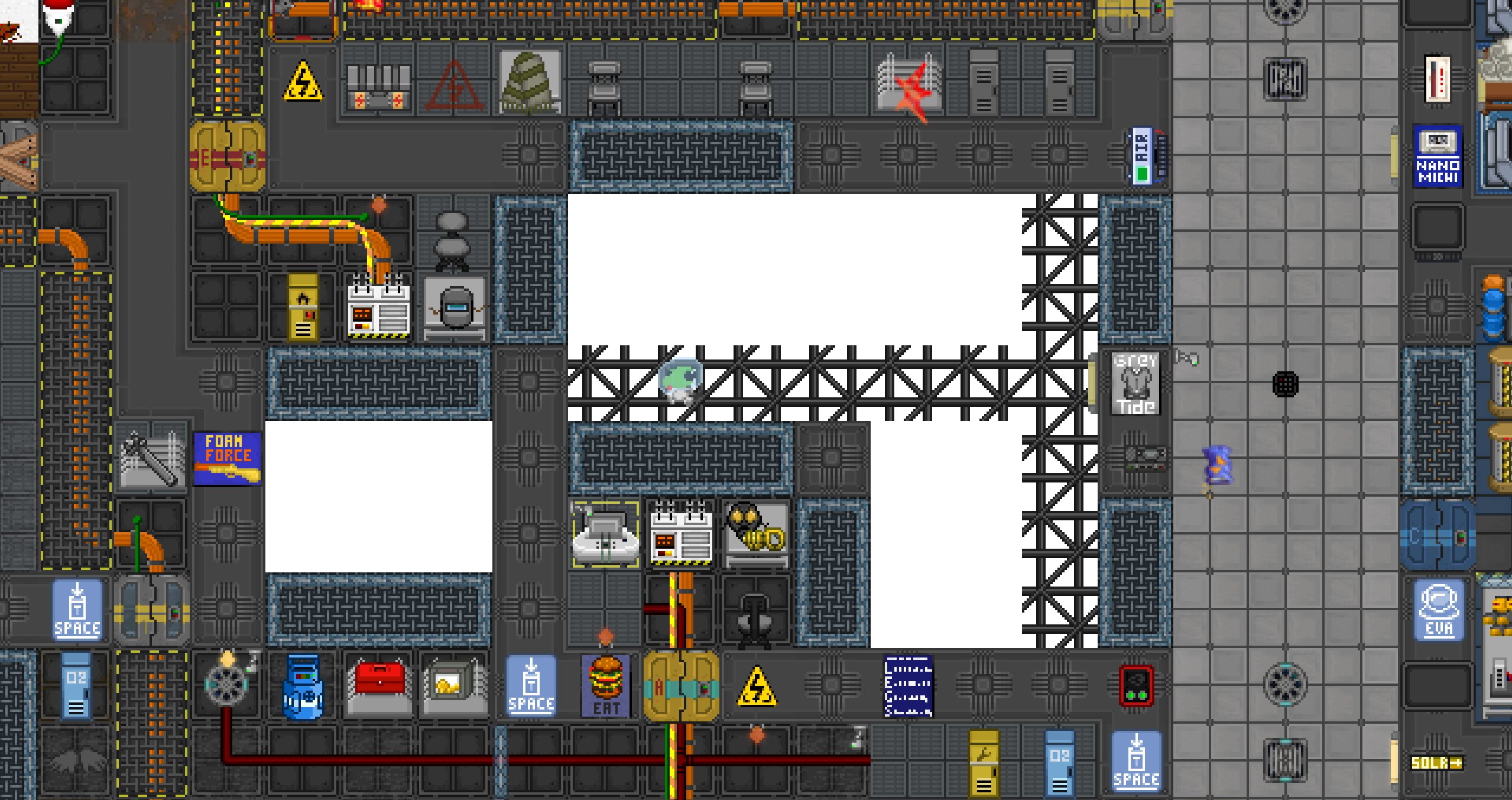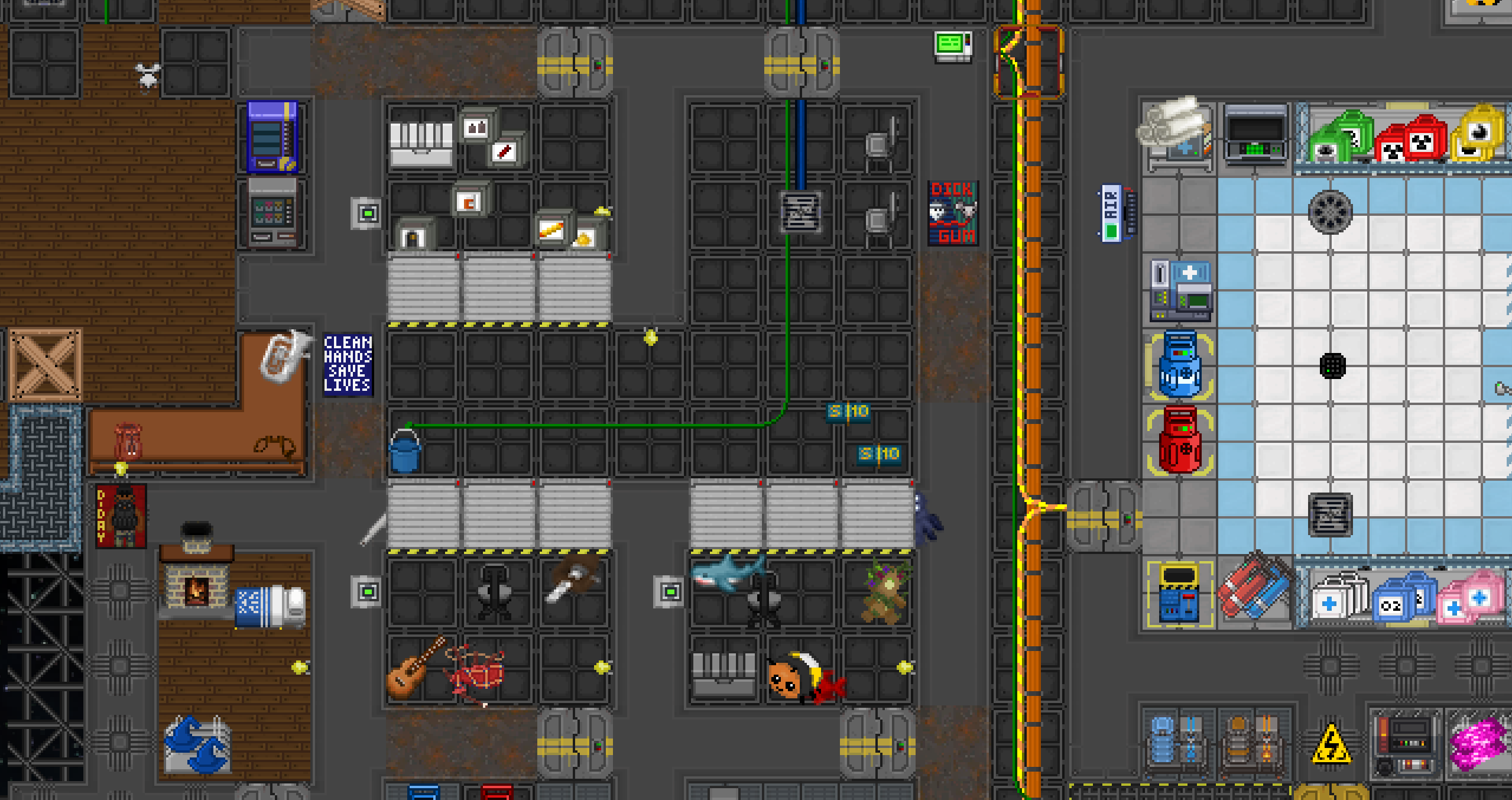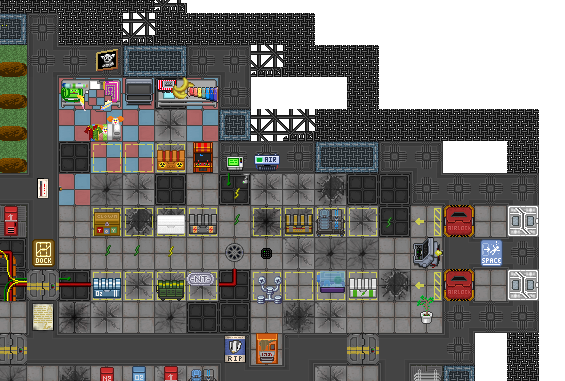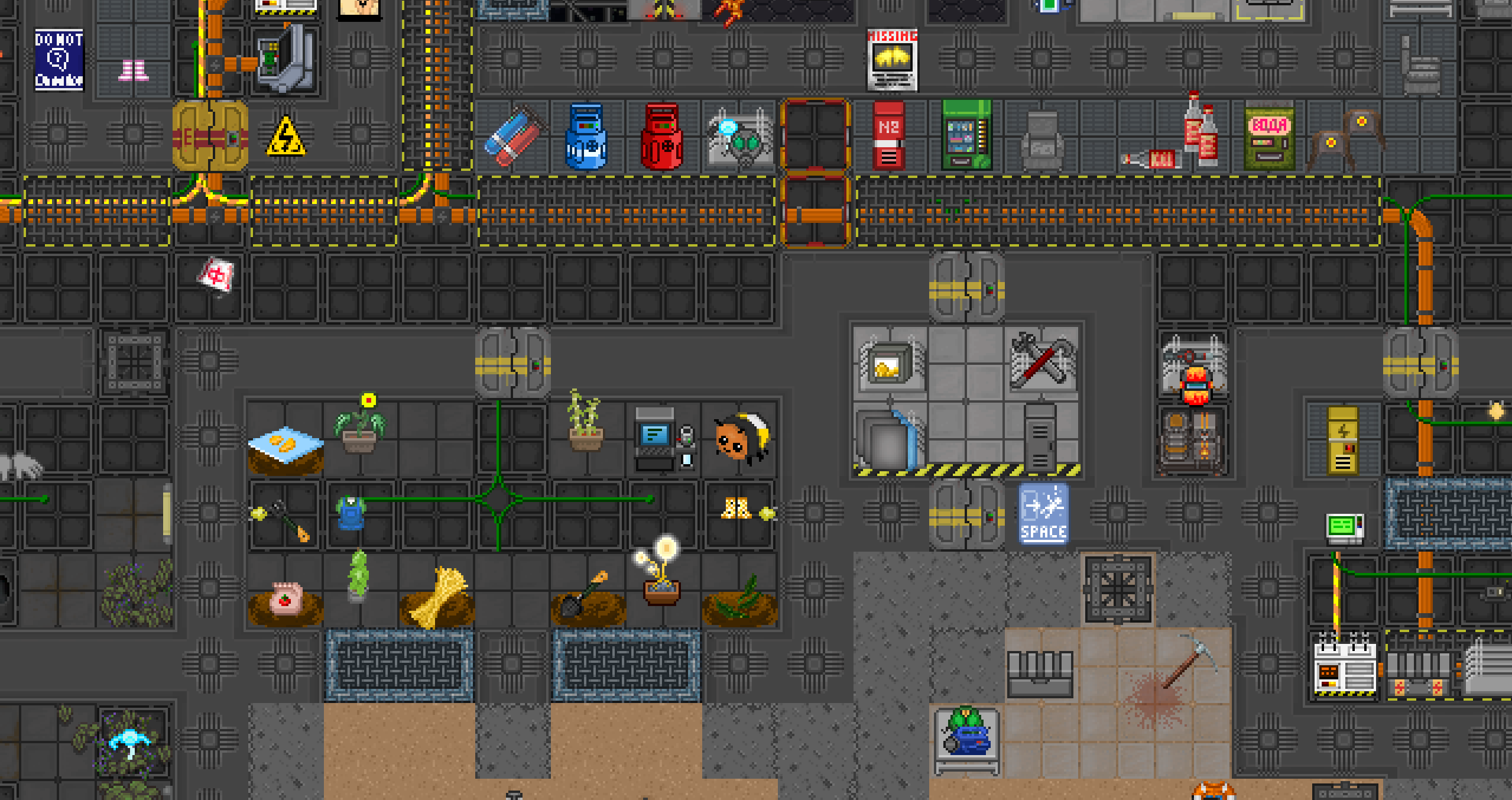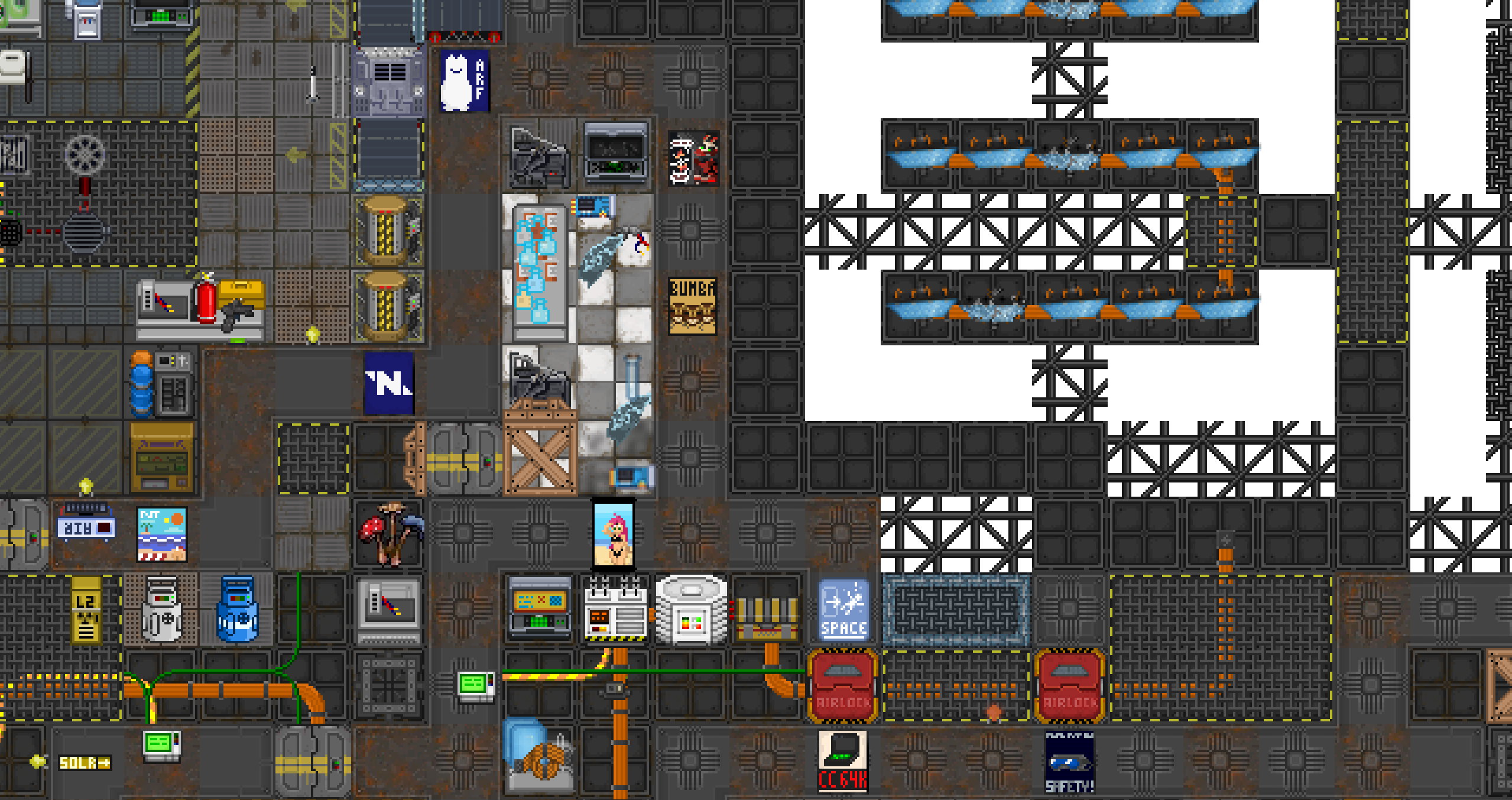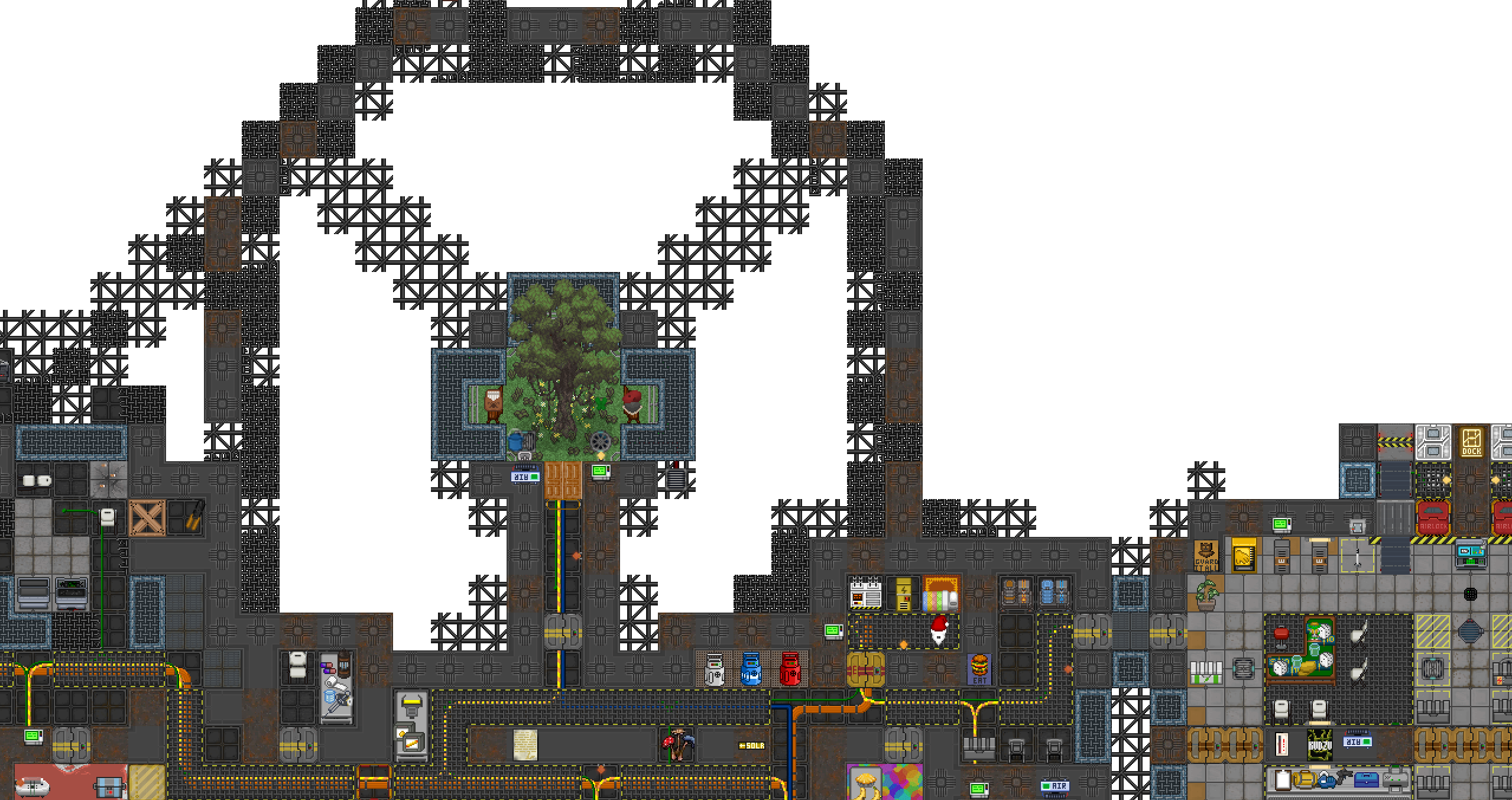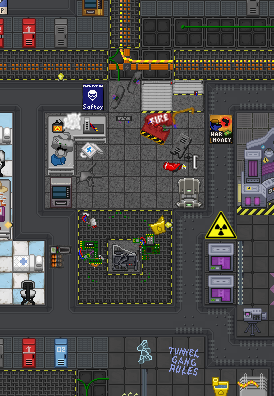Maintenance
Designing Good Maintenance
A Mapper’s Guide to the Underbelly
Maintenance isn’t an afterthought. It isn’t filler space between departments, and it certainly isn’t just somewhere to throw power cables and random loot. In good maps, maintenance is a secondary circulatory system. It is full of secrets, tension, atmosphere, and storytelling. Done well, it encourages movement, exploration, and fear. Done poorly, it becomes forgettable.
This article aims to bring together practical station design principles with real-world examples and community wisdom to help you shape your maintenance into something functional and memorable. Thanks to mappers like Southbridge, CrimsonJupiter, and co for being awesome and giving me references.
Why Maintenance Feels Bad When It’s Bad
Many mappers fall into the trap of thinking maintenance is just a dark hallway with less lighting. The result? One-tile-wide straight lines that run like electrical wires, only serving to connect A to B, nothing more. Players don’t explore these halls. They don’t fight in them. They hold one movement key and move through in silence, gaining nothing and leaving nothing behind.
Worse still is when these hallways lead nowhere: dead ends with nothing to find, or maintenance “loops” that just circle one department like a train track without stations. These layouts don't reward navigation or knowledge. They feel like wasted space.
If a player can walk through your entire maintenance section without seeing something new, taking a different route, or making a single decision, your layout probably isn't doing its job.
[EXAMPLE IMAGE: Dead-straight maintenance corridor or a single-access path trapped in a single department]
[EXAMPLE IMAGE: Single-wide maintenance corridor]
Maintenance Has Purpose: Give It One
There’s a reason maintenance exists in gameplay terms: it's where people hide, where antags run, where flanks form, where traitors roam. So when you design a maintenance path, ask yourself:
- Can someone escape through this?
- Can someone be ambushed here?
- Is this a space worth checking twice?
- Could someone build something here?
If the answer is "no" across the board, you’ve mapped a dead space. Good maintenance gives people options. It connects multiple places (ideally two or more departments and a hallway), provides alternate paths around secure areas, and lets creative players repurpose forgotten corners into side projects: bars, hideouts, or even traps.
[EXAMPLE IMAGE: Annotated Station Map with Maintenance Network]
This is a well-designed maintenance layout. It contains a balance of voids and tumors, with multiple entry points into departments and hallways. The small yellow arrows indicate department connections, while the larger ones represent general hallway links. This ensures strong traversal and escape routes across the station.
Color key: Dark Blue - Bridge and AI Core (including chute); Pink - Science; Red - Security; Orange - GenPop/Brig; Green - Service; Cyan - Medical including Virology; Yellow - Engineering.
The dotted yellow lines show the actual traversable paths within maintenance. Notice how they thread through and around most of the station’s departments, providing options without cluttering the design.
The Shape of Good Maintenance
To better structure maintenance, some mappers- particularly CrimsonJupiter - introduced a helpful mental model: Tunnels, Voids, and Tumors.
- Tunnels are your core corridors. These should bend, split, and intersect. A 1-tile straight tunnel is fine briefly, but it shouldn't be your default.
- Voids are small rooms that lean against departments. They feel like spaces maintenance workers once used. A lounge, a workshop, a locker room. These give your tunnels texture and a sense of history.
- Tumors are outgrowths: large extensions that stick out into unused space. These can house themed rooms or antagonist activity zones. They make your station silhouette interesting on scanners, but too many tumors can bloat your map and hurt travel flow.
This system isn’t a checklist, but a lens. If your maintenance is all tunnels, it’s dull. If it’s all tumors, it’s confusing. Balance them.
[EXAMPLE IMAGE: Annotated map showing tunnels (yellow), voids (red), tumors (blue)]
The word “tumor” in this guide refers to organic, irregular outgrowths from the main body of the station. These add character and variety to the layout. The term is purely structural, not judgmental. It does not imply something harmful or unwanted. Tumors, when used intentionally, are powerful tools in shaping dynamic and believable station maps.
Tension Through Layout
One of maintenance’s strengths is that it introduces risk. In a well-lit hallway, you can see everything. In maintenance, you don’t know what’s waiting. That’s by design.
Curves and corners are powerful tools. They break sightlines. They make you listen instead of just look. Add a side passage here, a bend there, a broken and dim lights, and suddenly the space feels alive, even if no one’s in it.
A good maintenance layout will make you pause. A bad one lets you sprint from one end to the other without a second thought.
[EXAMPLE IMAGE: Before/after tunnel layout with improved curves, cover, or decision points]
Player Expression in Forgotten Spaces
Maintenance isn’t just for fleeing antags. It’s also where bored crewmembers turn junk into community.
Across SS14, you’ll find stations with unofficial “Maintenance Bars,” gaming rooms, shrines, and weird art projects, because maintenance has no owner. That’s its magic.
Even if these areas go untouched for ten shifts, the possibility invites interaction.
[EXAMPLE IMAGE: Maints bar or repurposed room with sandbox elements: bar stools, dartboard, food/drinks]
Scavenging and Surprise
Maintenance should reward exploration without unbalancing the game. Place loot with intent. Keep oxygen tanks and toolboxes accessible, but hidden. Make a player feel clever for finding something, not lucky.
Don’t drop full loot tables into empty rooms. Instead, tuck small rewards into corners, behind doors, or inside voids that suggest they’ve been used before.
Maintenance should have tools, not treasure.
[EXAMPLE IMAGE: Smart loot placement in a tucked-away void with visual storytelling elements]
Integrating Maintenance into Station Layout
Maintenance isn’t frosting on a cake. It’s in the batter. If you bolt it on last, you’ll miss opportunities to make it useful.
Map it alongside the departments. Let it weave around them, not just border them. Think about where someone might run, where a nukie might plant their bomb, or where a traitor might stash a body.
Every department should have at least one maintenance-adjacent space. Not all should be accessible, but all should feel close. Doors that can be hacked or blown open. Windows to be broken. Cables to be cut.
[EXAMPLE IMAGE: An example where medbay is flanked by maints, allowing multiple escape and attack options]
A Word on Aesthetics
Maintenance should feel lived in, but also neglected. Use that tension. Don’t be afraid of:
- Rust decals
- Broken and dim lights
- Graffiti
- Old signs or incomplete markings
- Mess and clutter
Players will remember a room they don't want to enter more than one they walk through in silence.
[EXAMPLE IMAGE: Strong visual theming in a forgotten corner, broken and/or dim light, weird messages, damaged floor]
Example Maintenance Rooms
Maintenance isn't just a hallway. The best stations use it to tell stories and support side roles, sandbox building, or engineer work. Below are examples of themed maintenance rooms that serve aesthetic, narrative, and gameplay functions. These areas may or may not be used every round, but when they are, they become memorable.
1. Abandoned Break Room
A small seating area with rusting tables, broken and dim lights, and some vending machines. Add broken computers, a shattered window, maybe a forgotten note or bloodstain. This feels like a place that mattered once, then didn't.
[EXAMPLE IMAGE: Placeholder for abandoned break room]
2. Electrical Substation
A proper utility room with exposed cables, a backup SMES or APC, and tools for engineers. This supports maintenance’s functional role: Engineers use these spaces to restore power or sabotage systems. Include wiring messes, floor cables, and lockers.
[EXAMPLE IMAGE: Electrical rooms/Substations]
3. The Maintenance Bar
Tables, stools, a hacked vendor or fridge, and a sign with a funny name. This space exists to be claimed by bored assistants or roleplayers. It’s unofficial and always slightly janky, which is perfect.
[EXAMPLE IMAGE: Maints Bar]
4. Atmospheric Utility Closet
A room with air canisters and masks. Sometimes players need a place to refill tanks or manage air flow. These help the station breathe.
[EXAMPLE IMAGE: Atmos maints room]
5. Junk Storage Room
Filled with crates, broken vendors, empty racks, and debris. Players will rummage, repurpose, or hide in these places. They’re excellent for traitor roleplay.
[EXAMPLE IMAGE: Cluttered junk room]
6. Clown’s Cargo Bay
An abandoned storage area covered in stickers, foam, and banana peels. Maybe there's a horn hidden somewhere. A clown might "claim" it mid-round and nobody will stop them.
[EXAMPLE IMAGE: Placeholder for clown-decorated maint room]
7. Hidden Botany Lab
Some hydroponics trays, grow lights, and a locker full of nutrient mix. Maybe it was a botanist's side project. Maybe it’s growing something illegal.
[EXAMPLE IMAGE: Secret grow room]
8. Chemistry Den
Set up like a space-age Walter White lab. A beaker here, a grinder there, some vents left unfiltered. Could be hidden behind a disguised wall or airlock.
[EXAMPLE IMAGE: Hidden chem lab]
9. Space-Watcher’s Room
A tiny pressurized room with glass facing space. One chair, maybe some notes, and binoculars. For the dreamers and loners among the crew.
[EXAMPLE IMAGE: Observatory corner]
10. Abandoned Robotics Lab
Destroyed frames on the floor, scrap parts laying around, a destroyed computer. Don’t use functioning fabs or circuits, it’s meant to look derelict. Great for ambiance and traitor bait.
[EXAMPLE IMAGE: Placeholder for ruined robotics room]
Engineering Systems in Maintenance
Maintenance isn’t just artistic. It serves the most practical purpose of all: keeping the station running. These tunnels are where Engineers access:
- Cabling and power distribution
- Atmospherics and piping networks
- Disposals routing and junctions
- Substations, SMES, air refill points, and emergency supplies
- Oxygen, Nitrogen, and Air Canisters
- Water and Fuel Tanks
If a maintenance hallway exists without giving Engineers a reason to enter it, you may be missing a critical part of its design. These infrastructure features are what justify the term “maintenance” in the first place.
Locking Rules for Maintenance Doors
To balance accessibility with security, only entry and exit points of maintenance paths should use the locked variant of maintenance doors. Internal doors between maintenance rooms should use the unlocked variant.
Final Thoughts
A station without good maintenance is a clean corpse. There's nothing pulsing beneath the surface, nothing for players to wonder about, no secrets to uncover, no tension in the dark.
Great maintenance isn’t flashy. It’s felt. A hallway that saves a life. A tunnel that becomes a murder scene. A quiet room where a crewman builds a bar out of scrap.
That’s the kind of map people remember. So map it like it matters. Because it does.

